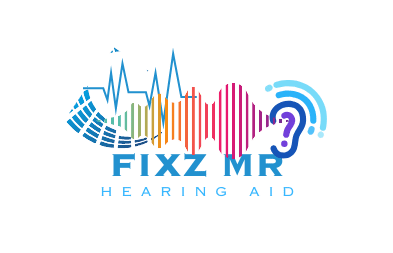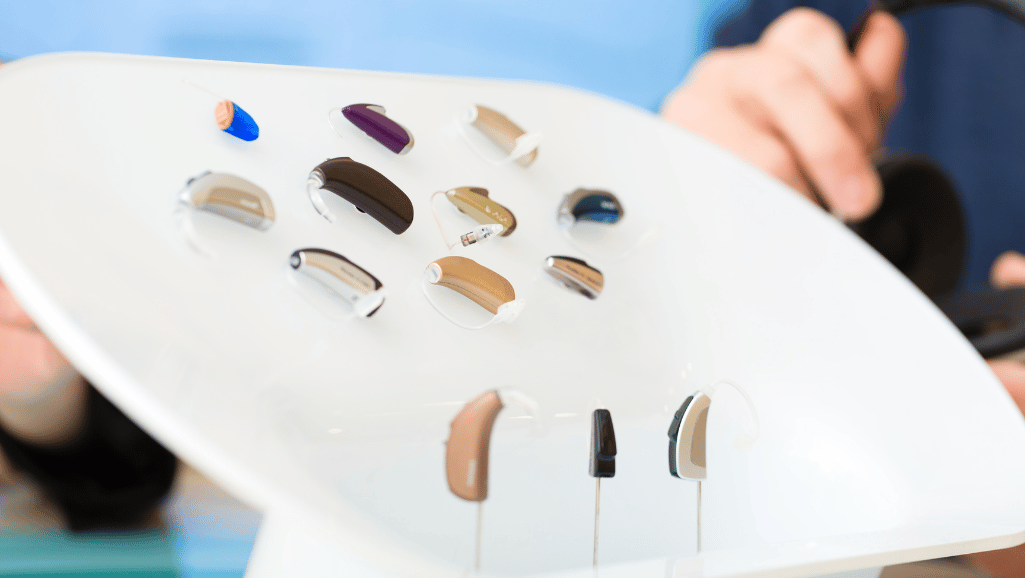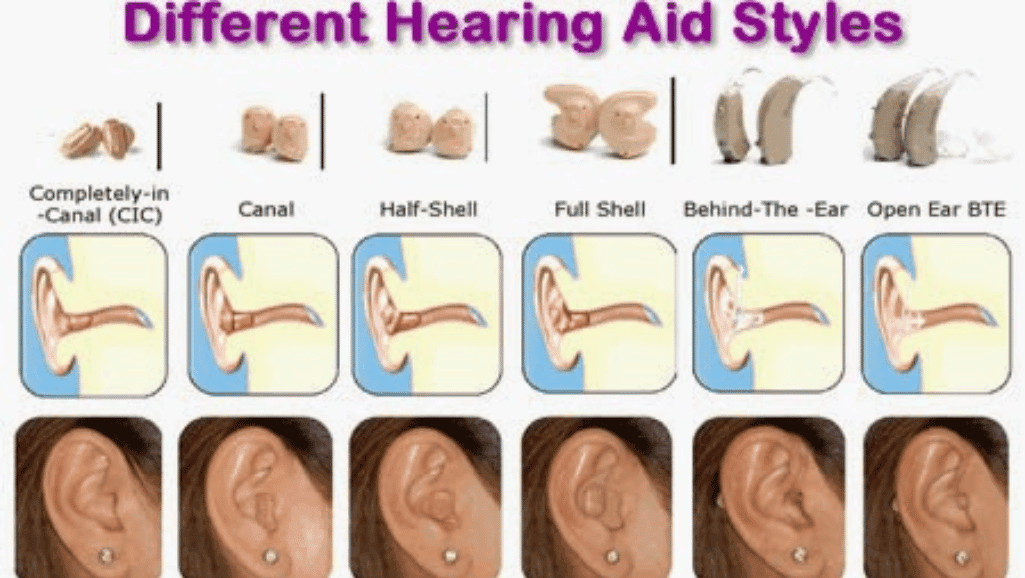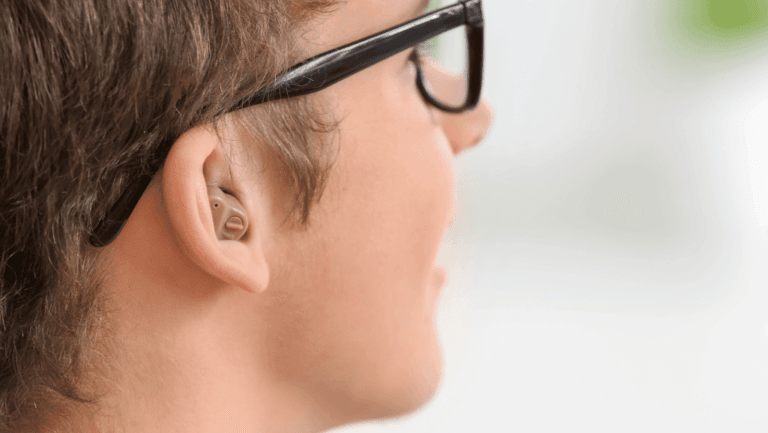Hearing aids are key devices for people with hearing issues. They help make sounds louder. Though not a fix for normal hearing, they make hearing clearer in different places. There are more than 30 types of hearing aids to pick from. They differ in size, the tech they have, and where they fit in the ear.
Some hearing aids are small and almost invisible, like the CIC models. Others, like BTE models, are bigger and more seen. CIC and mini CIC types are less seen but might not be as powerful. ITC and ITE models are a middle ground. They are sort of visible but come with cool features like a volume button and mics that pick up sound from different directions.
Need a lot of sound boost? Then, BTE hearing aids are great. However, they’re more noticeable. RIC and RITE models, and also open-fit ones, give a good sound boost but are less noticeable. Plus, modern hearing aids come with bonus features. These include batteries you can recharge and the ability to connect to devices without wires. This makes them easier to use and hear with.
It’s super important to talk to a health expert when choosing a hearing aid. They’ll help you think about your hearing loss, how you live your life, and what you can spend. Knowing the balance between how seen the aid is, its extra features, and the price helps in making a smart choice.
Key Takeaways
- There are over 30 kinds of hearing aids for different needs and likes.
- BTE and RIC/RITE hearing aids give a big sound boost and have cool features.
- CIC and mini CIC hearing aids are less visible but might not have extra features.
- Talking to a pro helps you find the best hearing aid for you.
- Modern hearing aids have rechargeable batteries and can connect to devices wirelessly for easier use.
Understanding How Hearing Aids Work
Hearing aids are crucial for those with hearing loss. They catch and boost sounds to improve hearing. These devices have different parts and come in various styles.
Basic Components of Hearing Aids
All hearing aids have a microphone, an amplifier, and a speaker. The microphone captures sounds. The amplifier boosts these sounds. Finally, the speaker sends them into the ear.
Digital vs. Analog Hearing Aids
The shift to digital hearing aids was a big leap forward. Analog aids cost less but aren’t as advanced. Digital hearing aids have better sound quality and can reduce unwanted noise. They let audiologists customize the aids for the user’s hearing loss and surroundings. They’re great at tuning out background noise thanks to special features.
Role of Batteries in Hearing Aids
Batteries keep hearing aids working. You can choose between disposable batteries and rechargeable hearing aids. Rechargeable ones are user-friendly and eco-friendly. They don’t need to be changed as often and are usually more resistant to water.
| Type | Features |
|---|---|
| Analog | Less expensive, basic amplification |
| Digital | Advanced sound processing, multiple listening programs, digital noise reduction |
| Rechargeable | Convenient, sustainable, enhanced water resistance |
Most makers let you try hearing aids for 30 to 60 days. This helps find the right type for your needs and likes. As technology gets better, hearing aids become more accessible and useful. It’s important to know your choices.
“The Food and Drug Administration’s rule has expanded access to hearing aids by introducing a new category: over-the-counter (OTC) hearing aids.”
Completely in the Canal (CIC) and Mini CIC Hearing Aids
Completely in the canal (CIC) and mini CIC hearing aids offer a discreet solution. They’re perfect for people with mild to moderate hearing loss. These aids are molded to fit inside your ear canal. This makes them almost invisible and very attractive.
Advantages of CIC Hearing Aids
CIC hearing aids are the smallest and most discreet type. They’re virtually invisible, which is great for those concerned about looks. They’re placed in the ear canal. This reduces wind noise for clearer sounds. They also stay put during daily activities thanks to their secure fit.
Limitations of CIC Hearing Aids
However, CIC hearing aids do have downsides. Their small size means they miss out on some features. Features like directional microphones and volume control are missing. They use small batteries which don’t last long. This means more frequent changes. Elderly users might find this hard.
Earwax can also block these aids, affecting their performance. Keep these points in mind when choosing hearing aids. Especially for the elderly or those needing certain features.
Yet, CIC and mini CIC aids are still very popular. They look good and fit securely. These aids are a top choice for people who need invisible aids. They work well for mild to moderate hearing loss.
In the Canal (ITC) and In the Ear (ITE) Hearing Aids
ITC and ITE hearing aids have their unique strengths and weaknesses. They’re tailored for various levels of hearing loss and personal needs.
Benefits of ITC Hearing Aids
ITC aids sit partly in the ear canal, blending invisibility with function. They come with useful features like volume controls and direction microphones. Placed deeper, ITC aids lessen wind noise for a better hearing experience.
People who want a mix of looks and effectiveness find ITC aids attractive. They work best for mild to moderate hearing loss, ideal for many elderly individuals.
Benefits of ITE Hearing Aids
ITE aids cover part or all of the outer ear. They work for mild to severe hearing loss and have top features like telecoils. This allows better phone calls and more power.
Thanks to their size, ITE aids have a longer battery life and more components. They’re great for those needing strong performance and various features.
Potential Drawbacks
However, both ITC and ITE models have downsides. Earwax can block them, needing frequent clean-ups. They might catch more wind noise than in-canal types and are more visible.
Choosing between ITC and ITE models depends on personal taste, hearing loss level, and wanted benefits for hearing health.
| Hearing Aid Type | Seating Position | Suitable For | Key Benefits | Potential Drawbacks |
|---|---|---|---|---|
| ITC | Partially within ear canal | Mild to moderate hearing loss | Increased features, reduced wind noise | Earwax blockage, moderate visibility |
| ITE | Part or entire outer ear | Mild to severe hearing loss | Telecoils, more amplification | Earwax blockage, more wind noise |
Behind the Ear (BTE) Hearing Aids
Behind the ear (BTE) hearing aids are commonly used, especially as the best hearing aids for the elderly. They are designed to hook over and rest behind the ear. Then, they connect to an earmold or earpiece. This setup sends sound right into the ear canal.
BTE hearing aids are versatile. They can help people with mild to severe hearing loss. They’re more visible than some other kinds but offer great amplification. This makes them a top-rated hearing aid choice for those needing strong sound support.
There’s now a push for less visible BTE models. These new designs combine good performance with a more discreet look. BTE aids come with key hearing aid features and benefits. These include directional microphones, manual controls, and rechargeable battery options. These features make the aids easier to use and the sound clearer.
| Feature | Description |
|---|---|
| Directional Microphones | Focus on sounds in front of the wearer to improve hearing in noisy environments. |
| Manual Controls | Allow users to adjust settings directly on the device, enhancing personal materialization. |
| Rechargeable Batteries | Provide the convenience of long-lasting power without the need for frequent battery changes. |
| Suitable for All Ages | BTE aids are appropriate for users of any age, from children to seniors. |
| Variable Amplification | Offers powerful sound amplification suitable for mild to profound hearing loss. |
Choosing BTE hearing aids can be a smart decision, especially for the best hearing aids for the elderly. They mix strong amplification and advanced features with a look that keeps getting more subtle. This mix makes them a good fit for many people.
Receiver in Canal (RIC) and Receiver in the Ear (RITE) Hearing Aids
Receiver-in-Ear hearing aids are known as RIC or RITE. They’re popular for their natural sound and advanced features. They’re both discreet and light, attracting many users. The speaker sits in the ear canal, connected by a slim wire to the behind-the-ear piece. This design boosts both looks and comfort.
Key Features of RIC/RITE Hearing Aids
RIC/RITE hearing aids have a key feature: M&RIE technology. This involves three microphones, with one inside the ear for better sound. They’re good at making high-pitch sounds clear and reducing feedback. Users also like the rechargeable batteries for a smoother experience.
| Feature | Description |
|---|---|
| Discreet Design | Small and lightweight, making them easy to wear |
| M&RIE Technology | Utilizes three microphones for optimal sound collection |
| High-Pitch Sound Amplification | Excellent at amplifying high-frequency sounds |
| Rechargeable Batteries | Offers convenience and sustainability |
Differences Between RIC and BTE
RIC hearing aids and BTE models are similar but have key differences. The receiver’s location is a big difference. In RIC models, it’s in the ear canal, connected by a wire. In BTE models, it’s in the behind-the-ear unit.
This design benefits RIC/RITE devices greatly. They offer better sound quality by avoiding the occlusion effect. This makes one’s voice sound more natural. Plus, it reduces feedback sounds and increases comfort. That’s why many people recommend RIC/RITE hearing aids.
Open Fit Hearing Aids
Open fit hearing aids are a special kind of BTE that keeps the ear canal open. They mix natural and amplified sounds for a balanced hearing. These devices are made to be less visible while making the sound better, so many people like them.
Characteristics of Open Fit Hearing Aids
Open fit hearing aids are known for their small, discreet design. They have a thin tube that leads to an open dome. This lets natural sounds into the ear while still amplifying when needed. This is important to keep sound passage natural and avoids the feeling of a blocked ear.
Ideal Candidates for Open Fit Styles
Open fit hearing aids work well for those who hear low frequencies well but need help with high frequencies. They are best for people with mild to moderate high-frequency hearing loss. These aids are comfortable and make sound seem more natural, which is why many choose them. Some might find them hard to insert because they don’t custom-fit. Yet, the advanced technology in these aids offers a great listening experience for many.
Additional Features and Benefits of Modern Hearing Aids
Hearing aids today come with new, advanced features. Understanding these features helps pick the right device. It’s important for meeting specific needs.
Noise Reduction
One big perk of new hearing aid tech is noise reduction. This feature cuts down background noise. It makes sounds clearer for users. Digital technology makes listening easier in noisy places.
Directionality
Directional mics are a big step forward. They pick up sounds in front of you and ignore others. This is helpful in noisy spots like parties or restaurants.
Wireless Connectivity
Wireless tech has changed how users experience hearing aids. With Bluetooth, hearing aids connect to phones and other devices. It makes calls and listening to music clearer and easier.
Rechargeable Batteries
Rechargeable hearing aids are now more popular. They’re easy to charge and last long. They also cut down on battery waste, which is good for the planet.
- Bluetooth compatibility: Enhances signal quality and minimizes interference.
- Artificial intelligence: Adapts settings based on user preferences and environments.
- Apps: Provide a spectrum of features, including adjustments, battery monitoring, and language translation.
- Directional microphones: Improve speech understanding in noisy settings.
- Feedback management: Reduces the occurrence of the whistling sound associated with hearing aids.
- FM compatibility: Assists in educational settings by improving signal quality without feedback.
Modern hearing aids have many extra features. They offer a wide range of solutions for different needs. Features like remote controls, telecoils, and direct audio input make them even better. Today’s hearing aids are a great mix of tech and practicality.
| Feature | Benefit |
|---|---|
| Digital Noise Reduction | Reduces background noise for better clarity. |
| Directional Microphones | Focus on desired sound sources, improving comprehension in noisy environments. |
| Bluetooth Connectivity | Enables seamless device integration and improved audio quality. |
| Rechargeable Batteries | Enhance convenience and sustainability with fewer battery replacements. |
Choosing the Right Hearing Aid for Your Needs
Finding the perfect hearing aid is a very individual choice. It relies on how severe your hearing loss is, your way of life, what you think looks good, and how much you can spend. It’s a good idea to talk to audiologists and hearing experts. They can test your hearing in detail and suggest hearing aids that fit your budget.
When picking the best hearing aid, ask about trying it out first, what happens as your needs change, warranty info, and costs you might face. Check if your insurance might help pay for it. Make sure to look closely at what each hearing aid offers. You want it to match what you need for hearing and your lifestyle.
Some key features to consider include:
- Noise reduction functions help make background noise less bothersome.
- Directional microphones focus on sound coming from in front of you.
- Wireless connectivity lets you link to Bluetooth devices.
- Rechargeable batteries save you from having to change batteries all the time.
Also, look for hearing aids that can be powered up or adjusted later. This can keep you happy with them for a longer time. It’s a good move to check out the newest hearing aid tech too. Recent improvements can really make a difference in how you experience sound.
In the end, finding the right hearing aid means looking at what they do, how comfortable they are, and the cost. You want to find a solution that meets your needs and likes all around.
Conclusion
Hearing aids are key in improving life for those with hearing problems. Yet, finding the best one can be tricky. Knowing the different styles of hearing aids and their features helps people choose wisely.
New tech makes hearing aids better and easier to use. Behind-the-Ear (BTE) models are popular and work for many hearing issues. In-the-Ear (ITE) aids are less visible and still meet various needs. In-the-Canal (ITC) and Completely-in-the-Canal (CIC) options are good for mild to moderate loss. Meanwhile, Receiver-in-Canal (RIC) and Receiver-in-the-Ear (RITE) are great for more severe cases.
Choosing well means talking to experts, knowing what you like, and understanding the tech out there. It’s crucial to get a hearing pro’s help to find the right fit for your needs. Consider how well it fits, how comfortable it is, and what features it has. Also, taking good care of your hearing aid makes it last longer and work better.
Getting the right hearing aid makes a big difference. It’s about finding a mix of comfort, features, and price that works for you. With the right choice and care, enhanced hearing can greatly improve life, especially for seniors looking for the best hearing aids for elderly.











